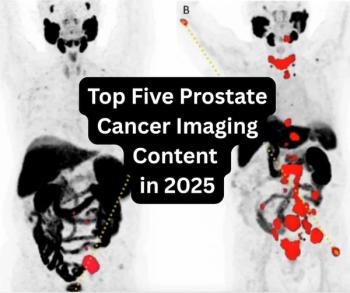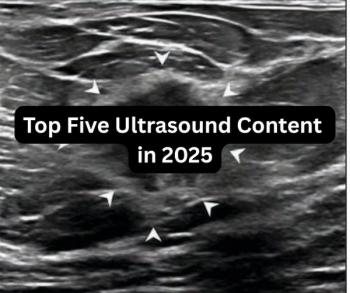
Substantial Dose Reduction Possible in CT of Pleural Effusions
Study identifies lowest possible radiation dose that still allows for detection of pleural effusions, thickening and calcification.
Pleural effusions, thickening and calcification may be detected on low-dose computed tomography (CT) using filtered back projection images at doses as low as 2 mGy, or at a dose of 0.8 mGy in cases with moderate to large effusions, according to a new study of human cadavers published in the
“Our study implicates that low-dose CT is feasible when presence or absence of pleural effusion, size and location is questionable,” Sarvenaz Pourjabbar, MD, of the division of thoracic imaging at Massachusetts General Hospital told Diagnostic Imaging. “It also showed that pleural thickening and pleural calcification can be assessed during low-dose CT exam.”
According to Pourjabbar, the increased call for reduction of radiation exposure during medical examinations had led to an increase in research to find the lowest possible effective dose for many imaging procedures. Currently, there is little research showing appropriate low-dose techniques for the evaluation of pleural effusion.
In this study, Pourjabbar and colleagues aimed to find the lowest radiation dose that could be used that would still allow the evaluation of pleural effusion. To do that, they scanned 45 human cadavers using seven different radiation dose levels (20, 12, 10, 6, 4, 2 and 0.8 mGy). The researchers reconstructed images at 3-mm slice thickness and used a 2-mm increment filtered back projection technique. All images then underwent evaluation by two chest radiologists.
Overall, the researchers found that the mean number of pleural effusions found using the 0.8 mGy dose was significantly less than the number found using all other dose levels (–21 vs. 17.6; P<.001).
Using the highest-dose chest CTs (2 to 20 mGy), 39 of 45 pleural effusions were detected in the cadavers. Of the effusions detected, 36 percent were trace and 41 percent were small. Using the lowest dose of 0.8 mGy, only 18 of 39 pleural effusions were detected.The researchers found that those effusions not well seen at the 0.8 mGy dose were trace (43 percent) or small (48 percent) in size.
“In the absence of IV contrast material, trace to small pleural effusions are suboptimally assessed on chest CT at 0.8 mGy and chest CT performed at 2-mGy CTDIvol may be more appropriate,” the researchers wrote. “However trace or small pleural effusions are unlikely to be clinically significant.”
[[{"type":"media","view_mode":"media_crop","fid":"25711","attributes":{"alt":"","class":"media-image media-image-right","id":"media_crop_6966658644378","media_crop_h":"0","media_crop_image_style":"-1","media_crop_instance":"2394","media_crop_rotate":"0","media_crop_scale_h":"0","media_crop_scale_w":"0","media_crop_w":"0","media_crop_x":"0","media_crop_y":"0","style":"margin: 1px; border-style: solid; height: 150px; width: 200px; float: right;","title":" ","typeof":"foaf:Image"}}]]
The mean BMI of human cadavers was 29 kg/m2. The results indicated that cadavers whose pleural effusions were not detected at the 0.8 mGy dose were significantly larger than those whose were detected (30.9 vs. 26.7 kg/m2; P<.01).
In addition, the study showed that pleural calcification could only be detected at a dose of 2 mGy or higher and pleural thickening at a dose of 4 mGy or higher. No calcification or thickening was seen at a dose of 0.8 mGy.
“Our study highlights the feasibility or postmortem CT for assessing dose reduction potential for a specific clinical indication,” the researchers wrote. “Although limited by the lack of IV contrast materials, multidose repetitive CT examinations in human cadavers provide important information without subjecting live human subjects to the potential harmful effects of radiation dose.”
Newsletter
Stay at the forefront of radiology with the Diagnostic Imaging newsletter, delivering the latest news, clinical insights, and imaging advancements for today’s radiologists.




























